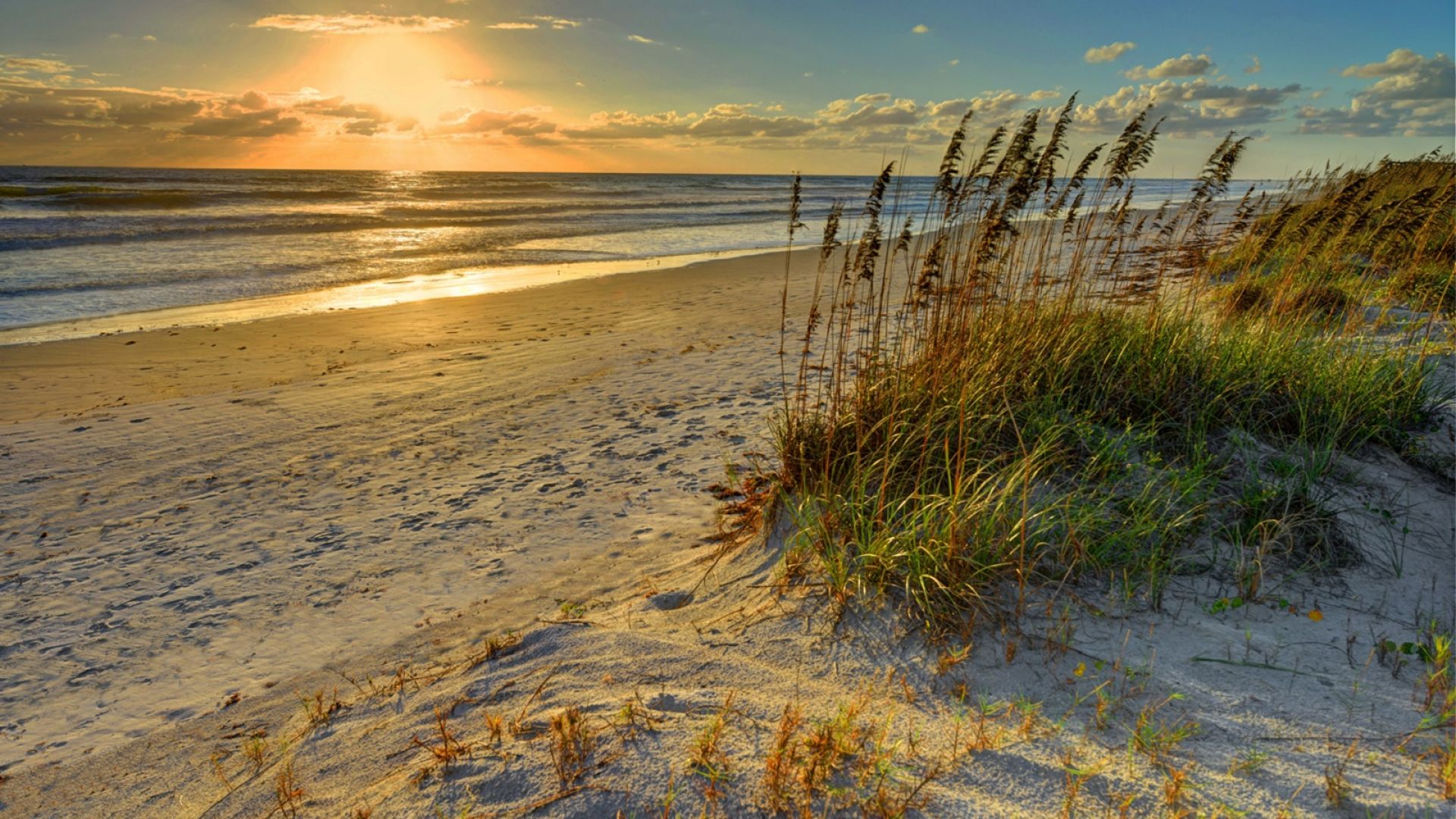How to Experience Sea Turtle Season in Daytona Beach
About Florida Sea Turtle Season
Springtime in Daytona Beach means warming temperatures, more hours of glorious sunshine and … the beginning of sea turtle season! Starting in mid-May, when these determined creatures lumber ashore to lay their eggs, through the fall, when tiny hatchlings scramble to the sea, nature lovers all up and down the Florida coast become fascinated with these adorable critters.
Sea turtles, which spend the vast majority of their life in open water, arrive at the shore under the cover of darkness to nest. Amazingly graceful swimmers, they emerge from the surf in search of the perfect spot above the high tide line. Using their hind flippers, they dig a hole a foot or so deep and lay up to 350 eggs. The eggs—soft-shelled and the size of table tennis balls —are then covered with sand and camouflaging debris, and the mama sea turtle returns to the ocean within a couple of hours. Female sea turtles may return about every two weeks during nesting season, laying a new nest each time. Afterwards, it can be up to nine years before they make their way to shore again.
About two months later, the eggs hatch, and the sand on top of the nest looks like it's boiling. Dozens of tiny hatchlings climb up through the sand and then, driven by instinct, scamper to reach the relative safety of the water. If you spot them on an early-morning walk along the beach, stand just near enough to keep hungry seabirds at bay until they reach the water.
Five Sea Turtle Species
Florida's offshore waters are home to five species of sea turtles. From the most common to the least, they are the loggerhead, green, leatherback, Kemp's Ridley and hawksbill. They range in size from the Kemp's Ridley, which measures about 30 inches long and weighs some 90 pounds, to the huge leatherback, which measures up to 7 feet long and weighs more than 1,000 pounds when full-grown.
These five species are either threatened or endangered, making them protected by Florida law, with a set of rules and regulations designed to help ensure their survival. Thanks to people following these guidelines, sea turtle populations have been rebounding from previously low levels. Even in good times, only about one in 1,000 eggs makes it to adulthood, a number that underscores just how precarious their survival is.
Keeping Sea Turtles in Daytona Beach Safe
If you're seeking nature things to do in Daytona Beach, there's a lot you can do to help protect sea turtles.
- In the Daytona Beach area, beach driving and parking are prohibited to the west of an established dune conservation zone.
- Nighttime beachfront lighting is limited during sea turtle season, from May through October. Hatchlings depend on moonlight reflecting off the ocean to help them find the water. Bright lights along the beach can disorient them, causing them to head toward Highway A1A instead. For this same reason, people shouldn't use flashlights or flash photography if they come across a nesting sea turtle or emerging hatchling.
- If you happen across a sea turtle laying her eggs in the evening, stay at least 30 feet away.
- Never disturb a turtle crawling to or from the ocean or laying eggs. If the turtle is interrupted during her nesting efforts, she may have a "false crawl" – that is, head back to sea without laying her eggs.
- Don't walk or cycle in the dunes or in places marked as nesting areas, and don't disturb any nests you might find with markers or protective screening.
- Keep the beach clean. Don't drop any litter, and help out by picking up any trash you see. To a sea turtle, balloons and plastic bags look like jellyfish — one of their favorite foods. Eating them can be fatal. Fishing line and kite string can become tangled around a turtle's flippers, making swimming difficult.
- When you leave the beach at the end of the day, take all tents, chairs and umbrellas with you. Fill in any holes the kids have dug in the sand to be sure nesting sea turtles and hatchlings don't fall into them.
The Blind Turtle
The Hilton Daytona Beach Oceanfront Resort named its bar The Blind Turtle to bring attention to the plight of sea turtles, which are being afflicted by a disease that causes tumors, affecting their vision and ability to swim and feed. The bar's name raises awareness of this important ecological issue affecting not only Florida's marine waters but the world's.
Make sure to grab a drink by our beachfront bar because one dollar from every Lost in Daytona and Absolut Citron Lemonade drink goes to the University of Florida's Whitney Laboratory Sea Turtle Hospital. Their sea turtle hospital researches diseases affecting sea turtles and helps to rehabilitate sick or injured turtles.
Marine Science Center
To learn more about sea turtles while also visiting the nearby attractions in Daytona Beach, visit the Marine Science Center, located at 100 Lighthouse Drive in Ponce Inlet. You'll be able to watch sea turtles up-close and learn how they're rehabilitated for release back into the wild.
If you spot a turtle that appears sick or injured anywhere in the state of Florida, contact the Florida Fish and Wildlife Conservation Commission at 1-888-404-FWCC (3822).


